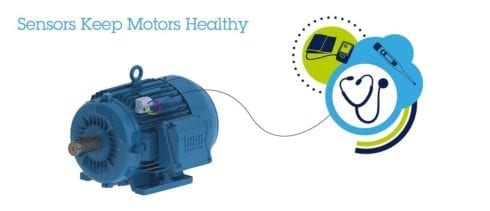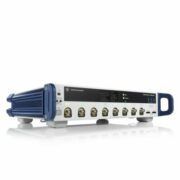Motors make the world work. By converting electrical energy into mechanical energy, motors can literally move mountains. In fact, motors are everywhere, with manufacturers making more than 10 billion of them every year, generating about $100 billion dollars in global revenue, according to the Gibbons Engineering Group. In fact, in its 2016 World Energy Outlook, the International Energy Agency estimates that electric motors consume more than 40% of all electricity globally and industrial motor systems use about 70% of all electricity consumed in Industry. When motors stop working, work stops happening. So predicting when that could happen would be exceptionally valuable.

WEG Sensor Keeps its Motors Humming
Headquartered in Brazil, WEG is among the world’s top 20 motor manufacturers and, as a result, they know how to build and maintain motors. They also know how disruptive motor downtime can be. And they’ve got a plan to reduce or eliminate that downtime, using the precepts of Industry 4.0 and ST technology. Using a full ST solution — STM32 MCUs (for the broad choice of more than 800 devices and highly efficient performance), the industry’s largest complement of sensors, including inertial measurement units, magnetometers, and environmental sensors (Temp, Humidity, Pressure), and Bluetooth and NFC connectivity — WEG and ST together developed a small but powerful motor sensor that listens to a motor, feels its pain, and shares that information with engineers, operators, and others to diagnose problems before they happen, when treatment is less expensive, less invasive, and less disruptive.
According to Marco Aurélio Sciepiet, Electrical Engineer and Researcher at WEG, the company chose ST for its knowledge in MEMS and power conservation, wide portfolio of connectivity and processing solutions, and local support, which because of access and proximity could work alongside WEG’s technical team to overcome obstacles and accelerated the sensor’s development. Moreover, ST’s well-oriented solutions to overcoming the challenges of temperature and vibration effects on the MEMS sensors, as well as minimizing power consumption, had a positive impact on their project schedules.
Sensor Optional
WEG’s sensors, which are sold separately from their motors, are fixed to a specific location on their motors. They use a simple smartphone app to ID the motor. From this info — model, the number of poles, and serial number — the sensor’s software adapts to automatically understand the “motor’s language,” monitoring its vibration, temperature, and magnetic field against spec’d values for that motor so it can hear if something changes or sounds abnormal. This way, if the motor starts to fail, its vibrations will make some noise, its temperature will start to rise, and the magnetic field around the motor will change, and WEG’s Motor Scan will be there to hear, see, and feel it — and transmit that information to the motor’s operators.










